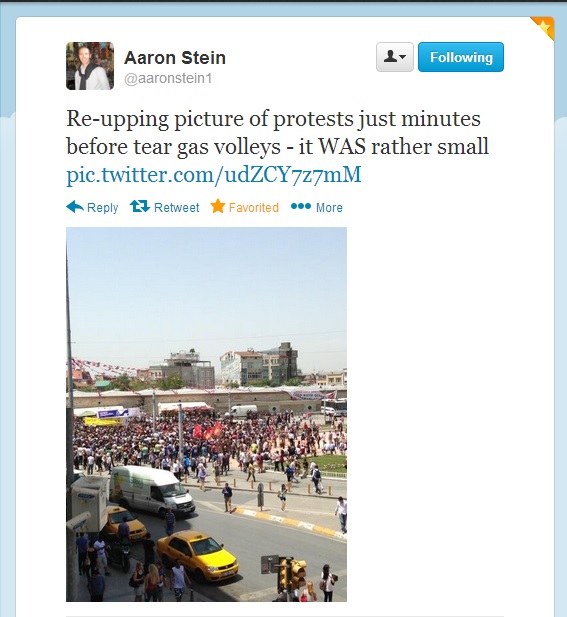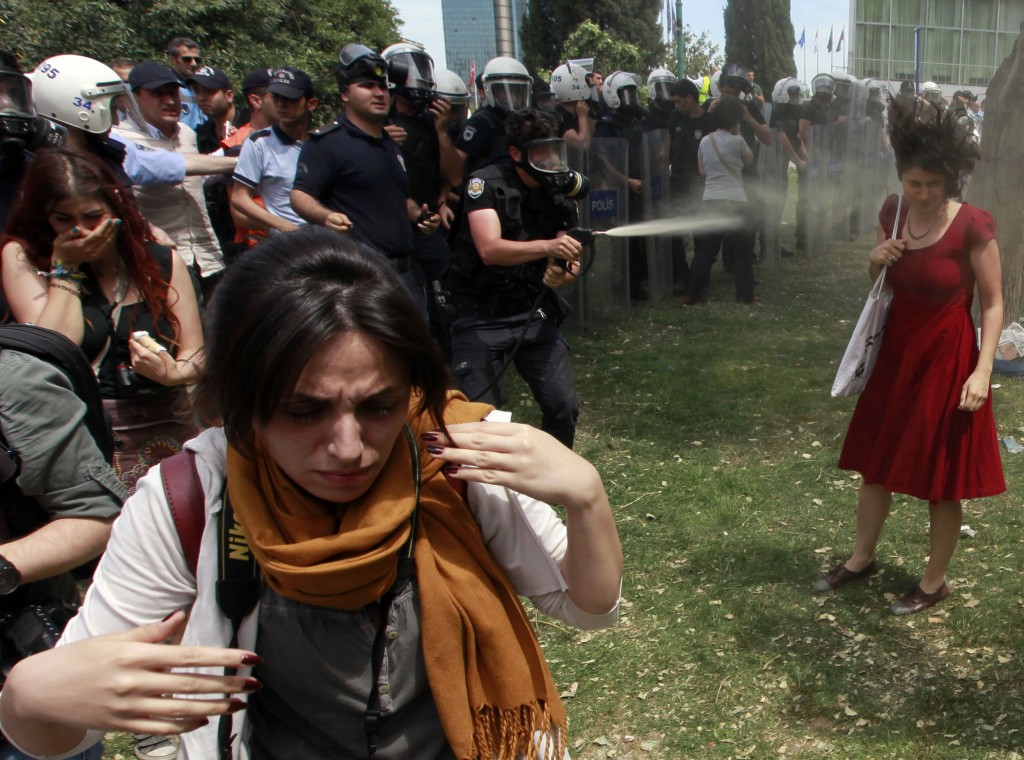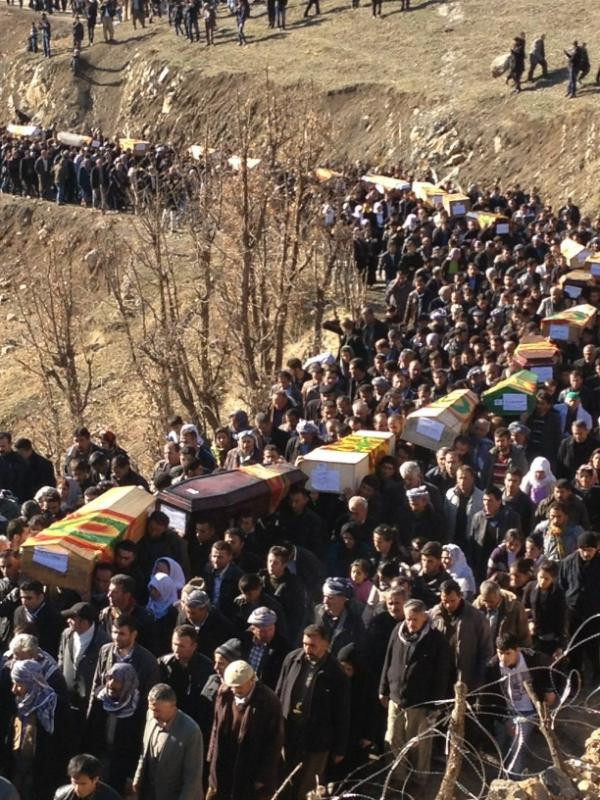Is there a Social-Media Fueled Protest Style? An Analysis From #jan25 to #geziparki | technosociology
technosociology 2013-06-01
When I tell people I study social media, politics and social movements, I often get a version of the question: “But there were protests before Facebook.” Sure, I say, but how did people hear about it? Word-of-mouth is, of course, one way but it’s almost never fast enough to spread protest of news quickly enough–remember, a political protest is a strategic game with multiple actors including a state which often wants to shut them down. Too slow diffusion of information, and your people will get arrested faster than they can show up at all. History of modern revolutions is always mixed up with the history and the structure of the communicative infrastructure of technology.***
That is why the speed of the initial response curve is crucial to whether a protest will survive or not. In Egypt, activists protested for many years on January 25 before 2011. But there were too few of them (100-150 per year) to sustain against the repression. On 2011, the initial day, there were about 5000-10000 people in Tahrir. It was too many, and it wasn’t the usual suspects (“It wasn’t just your usual activist friends, it was your Facebook friends”, an activist told me explaining how he knew it was different that time) and the movement was able to roll out from there.
Turkey, my home country, is known for big demonstrations. After the Arab Spring, there were demonstrations of about a million people in Diyarbakir (a predominantly Kurdish region) and people asked me if this was Turkish spring. I laughed. Diyarbakır can have a million people to have party to sneeze together. The Kurdish opposition is well-organized and has always been able to bring large numbers to streets. May Day celebrations in Taksim, Turkey are legendary (they alternate between lethal and joyous and often quite large). But they are also always organized by trade-unions and political parties. Turkey has has a variety of large demonstrations over the years. Not a single large, widespread spontaneous one, though. The last somewhat organic, widespread demonstrations I can remember after the 1980 coup are the “1989 Spring” workers’ strikes and actions which were widespread strikes and marches, culminating in the Zonguldak mine workers strike. And those were also somewhat to completely led by the trade unions. Pretty much every other large, impactful political gathering in Turkey I know of has been organized by a traditional institutions.
So, Turkey has been a NAACP country, not Tahrir.
That is, until yesterday.
So, let’s get some of the Tahrir/Taksim comparisons out of the way. Turkey’s government, increasingly authoritarian or not, is duly elected and fairly popular. They have been quite successful in a number of arenas. They were elected for the third time, democratically, in 2011. The economy has been doing relatively well amidst global recession, though it has slowed a bit recently and there are signs of worrisome bubbles. So, Turkey is not ruled by a Mubarak.
But it’s also not Sweden. The government has been displaying an increasingly tone-deaf, majoritarian-authoritarian tendency in that they are plowing through with divisive projects. (I should add that the opposition parties are spectacularly incompetent and should share any blame that goes around). The government has also revolutionized Turkish “government” services through the expansion of a spectacular level of e-government (which has greatly eased many people’s lives as bureaucracy is a major quality of life issue in countries like Turkey) which, in turn, has altered power relations between civic servants (who form the majority of the secular middle-class which does not vote for AKP) and the mass of citizens (many of whom do vote for AKP). However, the expansion of e-government has also enabled and been accompanied by expansion of state surveillance. There has also been great pressure on media to self-censure (to be honest, most Turkish mainstream media is not lining up for press courage awards, either, so most have been compliant and cowardly to the degree that CNN Turkey was showing cooking shows while CNN international was showing the protests in Turkey as a major news story yesterday). Further, the government has been moving to “mandate” lifestyle choices regarding alcohol, Internet content, etc. to create obligatory behaviors rather than recognizing that there are large swaths of the country that does not agree with its views on what one should drink or watch (ironically, also among its own voters.)
So, what’s the underling structure? It’s an increasingly tone-deaf, majority government who is relatively popular but is pursuing unpopular, divisive projects, an incompetent opposition, a cowardly, compliant mass media scene PLUS… widespread, common use of social media. In Turkey, especially in large cities, almost everyone has at least one cell phone, and many of them are Internet enabled. (You must provide your citizen ID number to get one which also means that the surveillance capacity is also broad although the amount of data means that the surveillance is likely targeted rather than just broad and random). Facebook is very common, with more than 30 million users. (It’s in the top ten worldwide). About 16% of the Interet population also uses Twitter and, as in here, Twitter is very important exactly because who those 16% are. (In fact, probably more important because it is not everyone and creates a somewhat more exclusive space though that is eroding).
One area that has been creating increasing tension between the Turkish government and many citizens in Istanbul has been the urban renewal projects undertaken by AKP. Some, for sure, are popular like the “metrobus” that zips between the two continents in a dedicated lane, bypassing the torturous traffic jams. Others, like the “renewal” of the wonderful, unique tapestry of Tarlabaşı near Taksim, home to Roma, transexuals, urban poor and other misfits, by bulldozing this area to throw up soulless, concrete and glass structures to be built and sold, helpfully, by the prime-minister’s son-in-law, are largely unpopular among the people who live in these areas or who inhabit the beautiful, vibrant areas around Taksim, Beyoglu, Cihangir.
So, it is not a coincidence that the latest incident was sparked by attempts to resist renewal of the “Gezi park” area of Taksim which has the last teeny-tiny bit of green in a very concrete and built-up part of Istanbul, historic Taksim. There was some long and complicated back-and-forth about this which ended with the government announcing that all or parts of the park might be replaced with a … shopping mall.
(Disclosure, I personally think most shopping malls are the secret 11th circle of hell, as described in the lost copy of the Dante’s Inferno that will be revealed in Don Brown’s next bestseller book!)
So, when a small –I repeat a very small, especially for Turkey– group of people tried to resist the bulldozers uprooting of the trees in Gezi to begin the construction, I did not think that much of it.
Here’s how small the protests were, from Aaron Stein’s tweet stream.
What happened next was a horrific, disproportionate police response which included a lot of tear gas and beating up of protesters. However, I should note that this, too is not unprecedented. Not at all. This Reuters image, which rang around the world, makes the situation fairly clear.
Then, the incompetent and cowardly media coverage started unrolling as usual–which meant a general blackout of news. (This, too, is not unprecedented. Many major news events, recently, have been broken on Twitter including the accidental bombing of Kurdish smugglers in Roboski (Uludere in Turkish) which killed 34 civilians, including many minors. That story was denied and ignored by mainstream TV channels while the journalists knew something had happened. Finally, one of them, Serdar Akinan, was unable to supress his own journalist instincts and bought his own plane ticket and ran to the region. His poignant photos of mass lines of coffins, published on Twitter, broke the story and created the biggest political crisis for the government. Serdar, unfortunately, got fired from his job as a journalist.
Here’s Serdar’s Twitter pictures breaking the news about the biggest political scandal in Turkey in years, in face of mass media silence on the topic. (Twitter search failing me in finding his original tweet but here he is telling people he is going to the area, by himself, as the silence about the bombings continues on media).
It was after the Gezi protesters were met with the usual combination of tear-gas and media silence something interesting started happening. The news of the protests started circulating around social media, especially on Twitter and Facebook. I follow a sizable number of people in Turkey and my Twitter friends include AKP supporters as well as media and academics. Everyone was aghast at the idea that a small number of young people, trying to protect trees, were being treated so brutally. Also, the government, which usually tends to get ahead of such events by having the prime minister address incidents, seemingly decided to ignore this round. They probably thought it was too few, too little, too environmental, too marginal.
On that, it seems they were wrong. Soon after, I started watching hashtags pop-up on Twitter, and established Twitter personas –ranging from media stars to political accounts– start sharing information about solidarity gatherings in other cities, and other neighborhoods in Istanbul. Around 3am, I had pictures from many major neighborhoods in Turkey –Kadıköy, Bakırköy, Beşiktaş, Avcılar, etc– showing thousands of people on the streets, not really knowing what to do, but wanting to do something. There was a lot of banging of pots, flags, and slogans. There were also solidarity protests in Izmit, Adana, Izmir, Ankara, Konya, Afyon, Edirne,Mersin, Trabzon, Antalya, Eskişehir, Aydın and growing.
So, as far as I can remember, these are the first protests in Turkey in the post-80 coup era that are less like NAACP-organized civil rights protests, and more like social-media fueled Tahrir protests. (Just so people don’t get confused, there are significant differences between Egypt 2011 and Turkey starting with the fact that AKP is a duly elected, relatively popular government that has been growing tone-deaf and authoritarian/majoritarian).
So, is there a social-media style of protest? I think we have enough examples now to say there seems to be, and here are some of their common elements. (Examples include Egypt and Tunisia, M15 in Spain, Occupy, Gezi in Turkey, Greece, etc).
1- Lack of organized, institutional leadership. This also makes it hard for anyone to “sell out” the movement because nobody can negotiate on behalf of it. (For hilarious versions, read Wael Ghonim’s version of how Mubarak officials tried to convince him to call of the protests in return for concessions as he tried to explain that he had no such power!)
On the other hand, this means that the movement cannot negotiate gains either because.. Well, because it cannot negotiate.
2- A feeling of lack of institutional outlet. In the case of Egypt, this was because elections were rigged and politics banned. In Turkey, media has been cowered and opposition parties are spectacularly incompetent. In Occupy in US, there was a feeling that the government and the media are at the hands of the moneyed interests and corrupt.
3- Non-activist participation. I think this is crucial. Most previous big demonstrations in Turkey are attended by people who have attended demonstrations before. Tahrir protests 2011, Tunisia December 2010, Gezi 2013 drew out large numbers of non-activists.
4- Breaking of pluralistic ignorance. I have made this argument before but revolutions, political upheavals, and large movements are often result of breaking of “pluralistic ignorence”–ie the idea that you are the only one, or one of few, with a view. Street demonstrations, in that regard, are a form of social media in that they are powerful to the degree that allow citizens to signal a plurality to their fellow citizens, and help break pluralist ignorance. (Hence, the point isn’t whether the signalling mechanism is digital or not, but whether how visible and social it is).
5-Organized around a “no” not a “go.” Existing social media structures allow for easier collective action around shared grievances to *stop* or *oppose* something (downfall of Mubarak, stopping a government’s overreach, etc) rather than strategic action geared towards obtaining political power. This is probably the single biggest weaknesses of these movements and the reason why they don’t make as much historical impact as their size and power would suggest in historical comparison. However, in the end, politics happens where politics happens and staying out or being unable to join results in a tapering, whimpering out effect as the movement slowly dissipates as it runs out of tactical moves and goas.
6-External Attention. Social media allows for bypassing domestic choke-points of censorship and reach for global attention. This was crucial in the Arab Spring (and we know many people tweeting about it were outside the region which makes Twitter more powerful in its effects, not less.
Here’s CNN International showing Turkey protests while CNN Turkey shows a cooking show. (Image widely circulated on social media):
Through social media, protesters learned that the whole world, or at least some portions of it, was indeed watching. Since protests are as much about signaling more than they are about force (as protesters are almost never more powerful than state security forces), this is a crucial dynamics.
7- Social Media as Structuring the Narrative. Here and in other protests, we saw that social media allows a crowd-sourced, participatory, but also often social-media savvy activist-led structuring of the meta-narrative of what is happening, and what shape the collective grievances should take. Stories we tell about politics are incredibly important in shaping that very politics and social media has opened a new and complicated novel path in which meta-narratives about political actions emerge and coalesce.
8-Not Easily Steerable Towards Strategic Political Action. This we have seen again and again and is related to point number 5. Social-media fueled collective action lacks the affordances of politics an institutional arrangement –political party, NGO, etc– can provide.
Where is this going? I can’t offer predictions but I do emphasize that this is not going to topple the Turkish government by itself. This is not Tahrir, 2011, but it is an interesting inflection point among the frustrated but powerful segments of the Turkish society who believe that the current government has decided to run roughshod over them and cannot find efficacious outlets for their opposition.
[added] Here’s a striking example of what media cowardice and self-censorship looks like. New York Times covered the Turkey protests on the front page of its online site. Sabah, a major newspaper in Turkey, did not put one of the biggest protests in Turkey on its front page at all.
What happens next depends on many factors including the government response and the depth of the feeling among the Gezi protesters. I doubt, however, that this is the last social-media fueled protest we have seen.
OBLIGATORY FOOTNOTE:
*** It should be needless to say at this point but just so someone who thinks this is somehow a profound comment doesn’t feel like they have to point it out fifty times in the comments section: OF COURSE REVOLUTIONS ARE MULTI-CAUSAL, COMPLEX EVENTS AND THE COMMUNICATION INFRASTRUCTURE DOES NOT CAUSE THE UNDERLYING GRIEVANCES BUT RATHER IT HELPS STRUCTURE WHAT KIND OF, IF ANY, COLLECTIVE ACTION IS ORGANIZED AROUND THE GRIEVANCES.
(Sorry for the all-caps but I spent the 2011 “Arab Spring” year having to respond to people who felt compelled to keep saying political uprisings are about social, economic and cultural grievances as if there were actual serious people who claimed otherwise–and as if that fact meant the communicative infrastructure was irrelevant which is either the view of a naive person who has never lived under a censorship regime where it becomes blindingly obvious why communication infrastructure matters–yes, all the way back to 1848 and even the French revolution as those stories are intertwined with the development of print, telegraph, railroads (which carry news and newspapers), etc.)
**** (Also, I wrote this very fast in an otherwise very busy week. I will correct typos(!), update links, as I get a chance!) This is a “fast and dirty” analysis, not meant to be comprehensive, include every factor, does not list every misstep by the government or by the protesters, nor does it provide the exhaustive or complete list of every factor!




